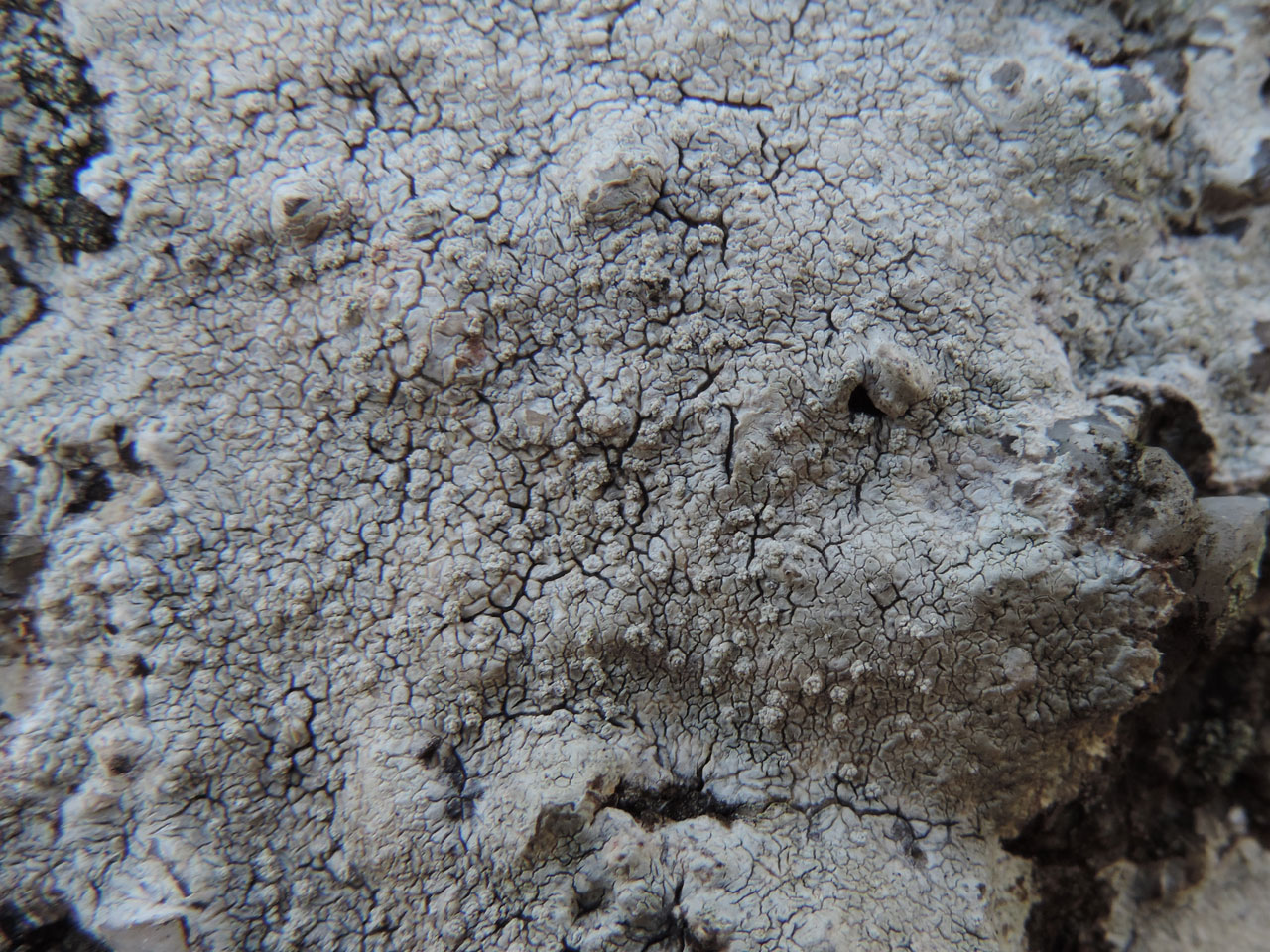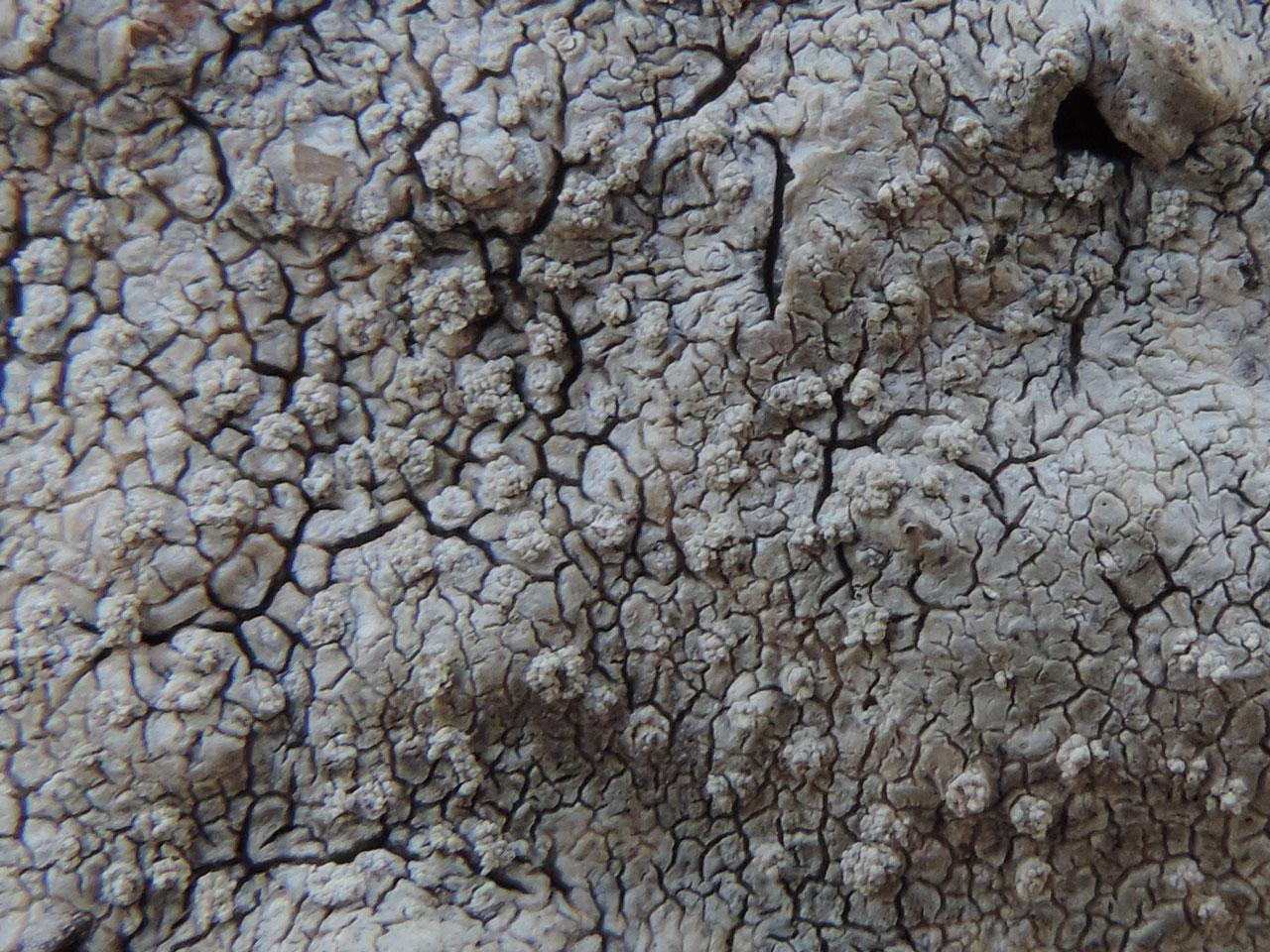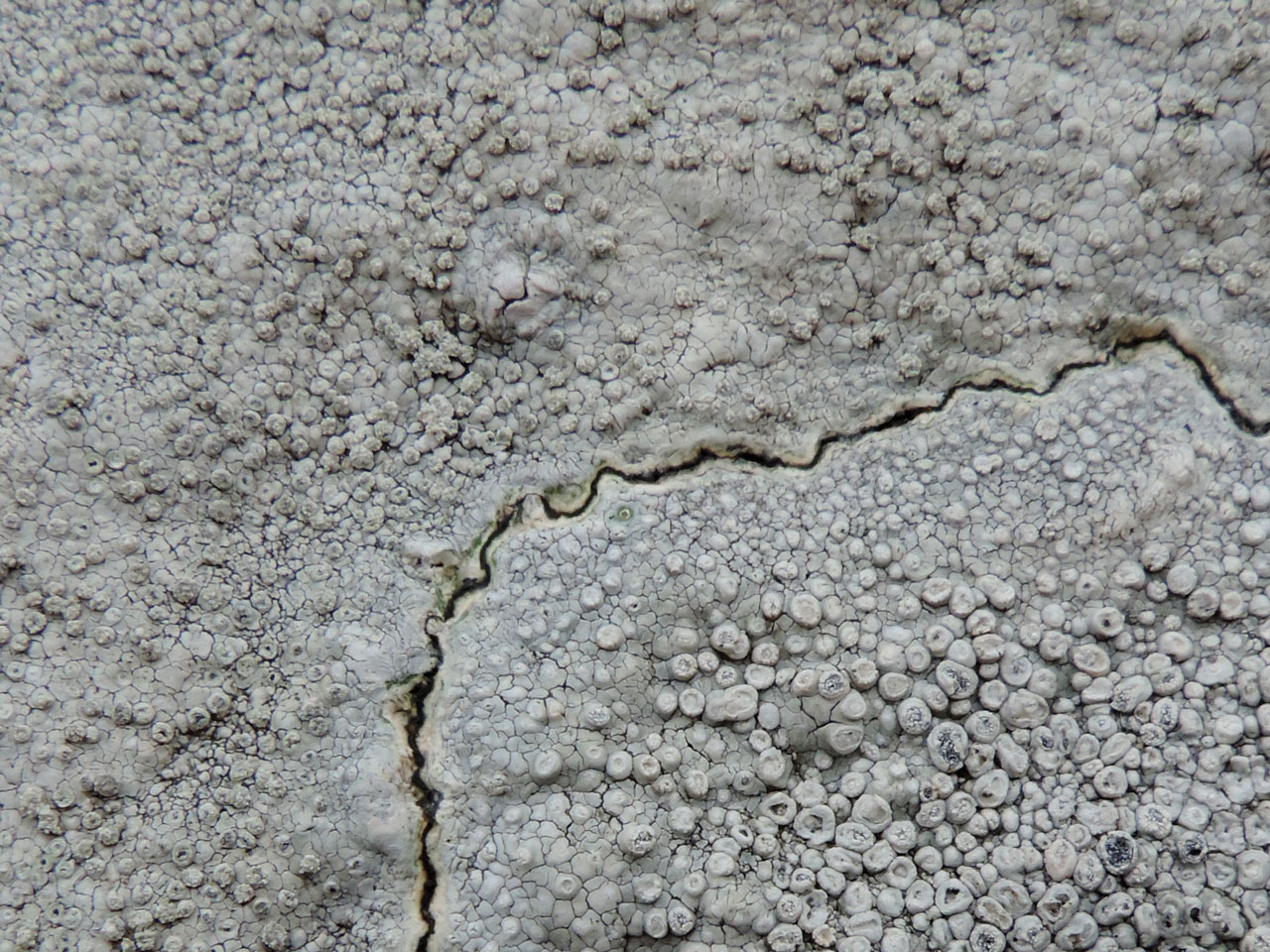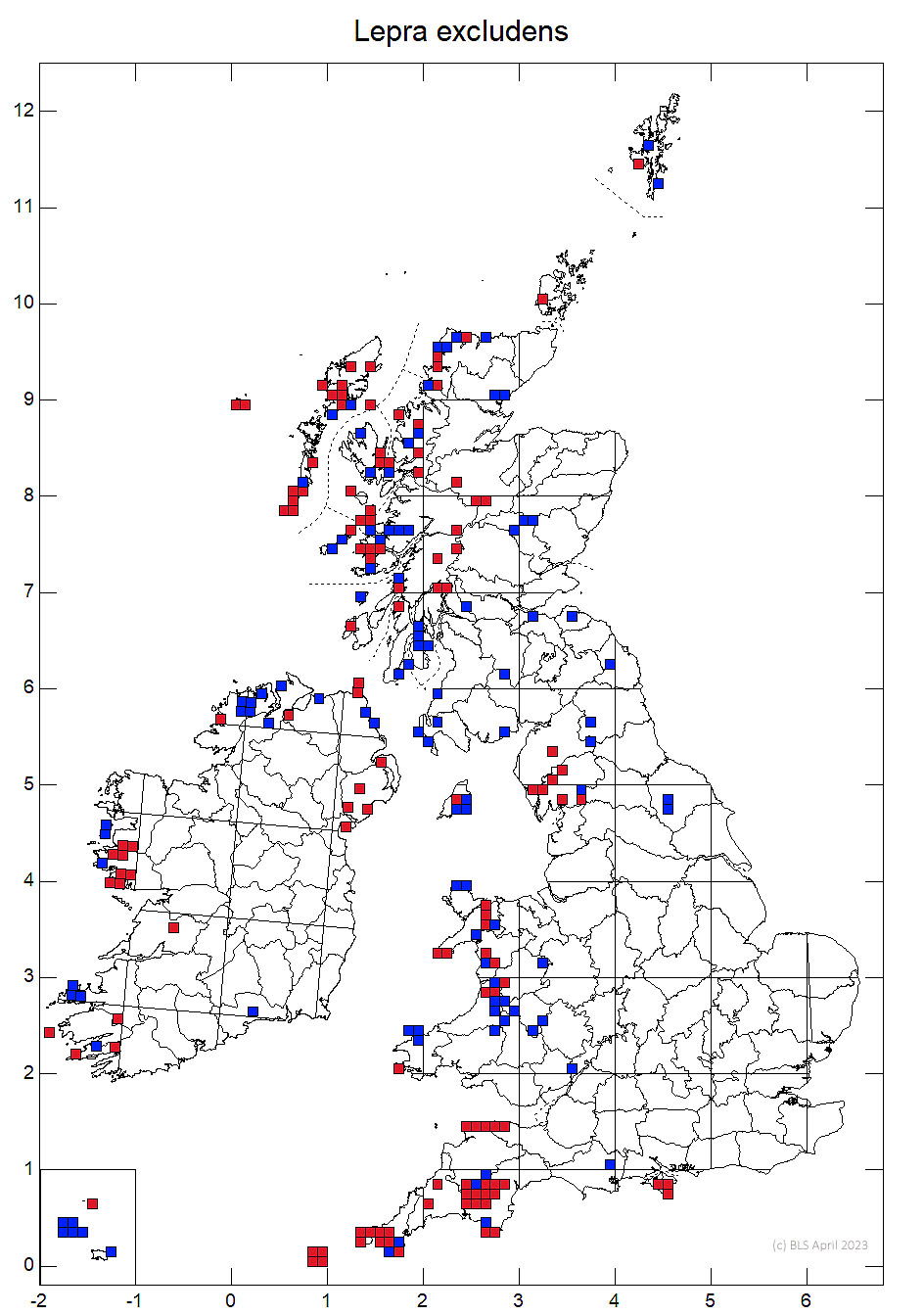Description from Cannon et al (2021) below.
Thallus wide-spreading, rather thick, deeply rimose-cracked-areolate; prothallus ± distinct, concolorous or paler; areoles coarse, 0.5–2 mm, irregularly angular, flat or ± convex, sometimes somewhat papillate; upper surface white-grey, matt, becoming rugose-roughened; soralia 0.6–1 (–1.5) mm diam., abundant, ± convex, arising from wide, low warts, coarsely granular, mostly paler than the thallus, occasionally tinged yellowish, discrete or becoming confluent, convex or somewhat irregularly excavate with irregular, raised margins. Apothecia rare, arising within the soralia; disc pruinose, soon aborting. Ascospores unknown. Conidia 4–5 × ca 0.5 μm, straight. Soralia C–, K+ yellow→blood-red, KC+ yellow-red, Pd+ yellow-orange, UV± pale grey or grey- yellow, (norstictic, ± salazinic, ± unknown fatty acids, ± UV+ yellow xanthone).
Characterised by the extensive, mainly thick cracked pale thallus with numerous rounded raised soralia developing from the breakdown of coarse low convex tubercles. Older records (especially from inland sites) are probably confused with Pertusaria lactescens. Lepra aspergilla has a thinner, not or indistinctly areolate, Pd+ orange-rust red thallus. Lepra excludens is possibly the sorediate counterpart of L. monogona, but the latter taxon has not been sequenced.
On sunny, siliceous rocks, especially granite, mainly coastal.

Western coasts of Britain and Ireland.
Britain: Notable
Cannon, P., Kukwa, M., Coppins, B., Fletcher, A., Sanderson, N. & Simkin, J. (2021). Pertusariales: Ochrolechiaceae, including the genera Lepra, Ochrolechia and Varicellaria. Revisions of British and Irish Lichens 5: 1-17. Link



